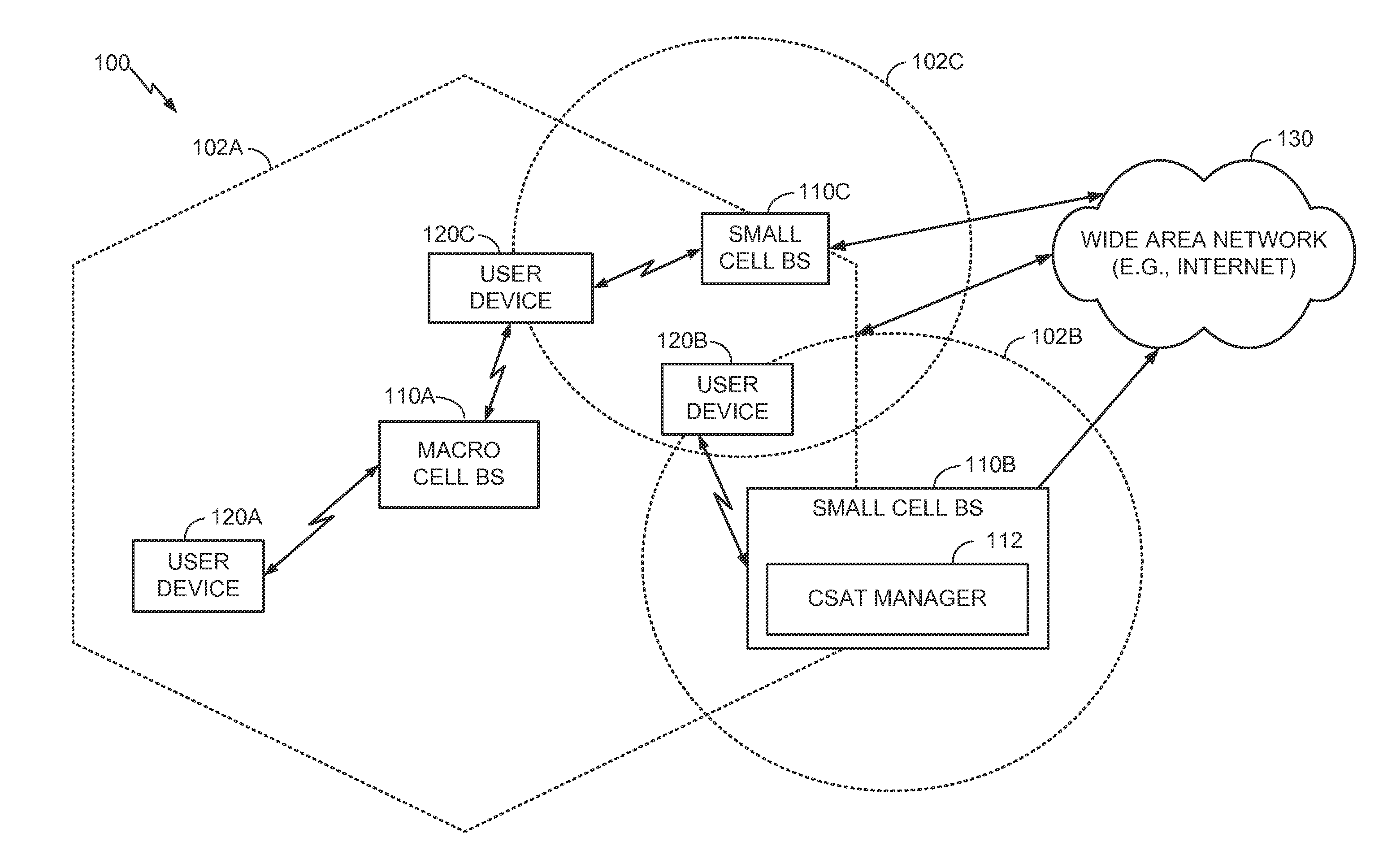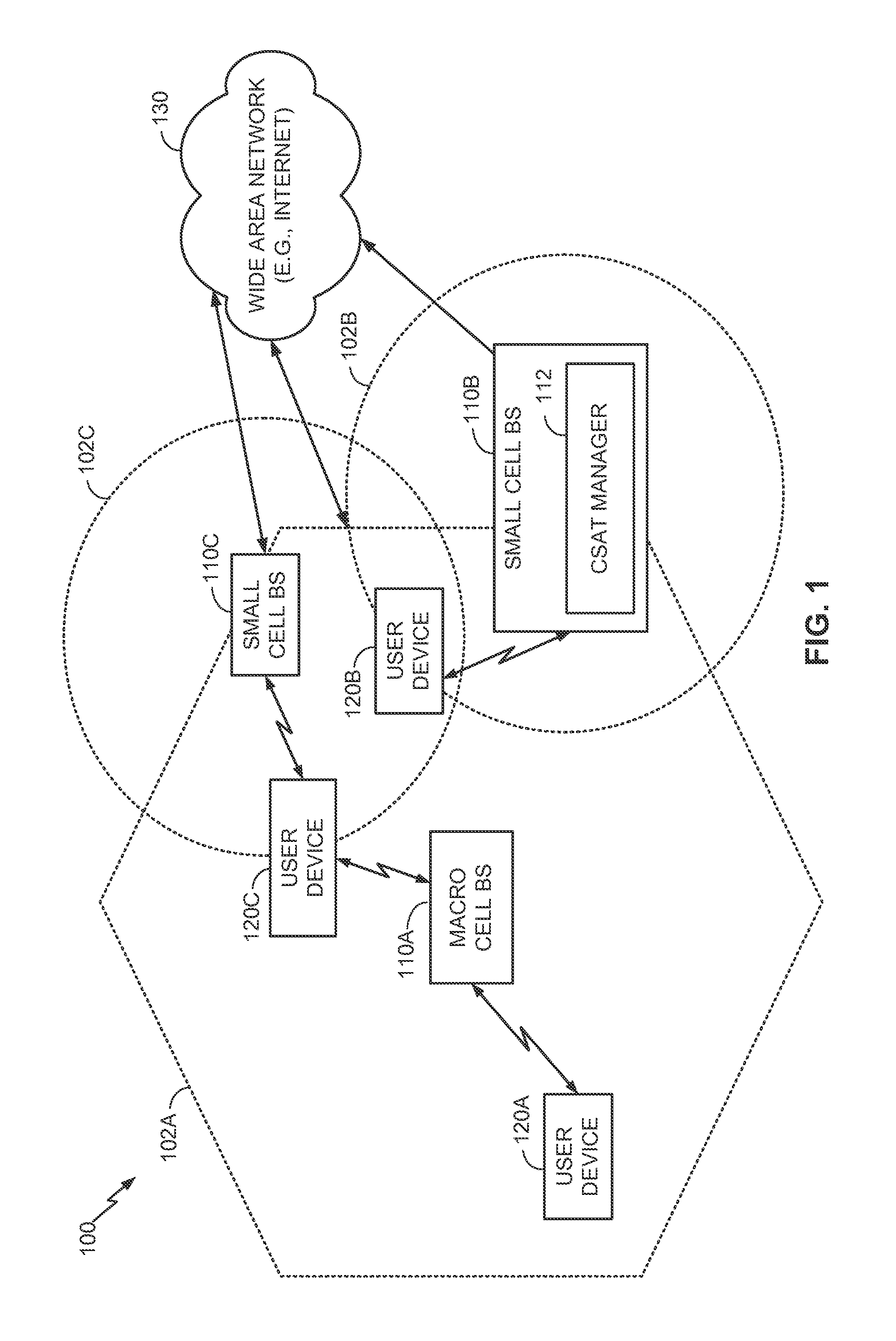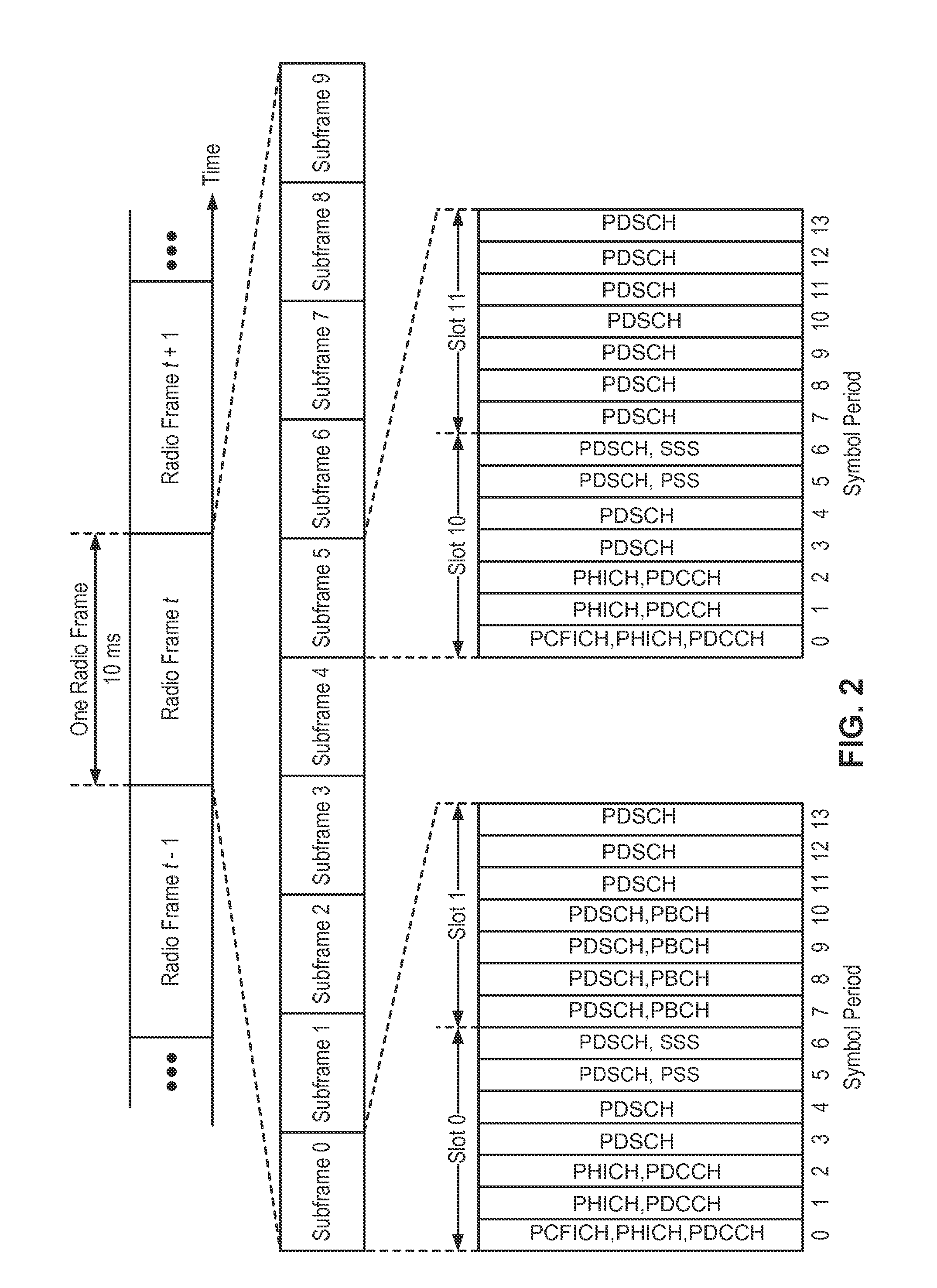Carrier sense adaptive transmission (CSAT) coordination in unlicensed spectrum
a carrier sense and adaptive transmission technology, applied in the field of interference coexistence, can solve the problems of poor user experience, encroachment on operations, and inability to fully accommodate channel characteristics, so as to reduce interference, reduce interference between rats, and reduce interference
- Summary
- Abstract
- Description
- Claims
- Application Information
AI Technical Summary
Benefits of technology
Problems solved by technology
Method used
Image
Examples
Embodiment Construction
[0029]The present disclosure relates generally to coordinating Carrier Sense Adaptive Transmission (CSAT) communication with user devices via Activation / Deactivation Medium Access Control (MAC) Control Element (CE) commands. Utilization of Activation / Deactivation MAC CE commands may help to improve synchronization with user devices and provide support for legacy devices. To further enhance system efficiency, the user devices may be activated in a certain activation order based on their respective link qualities, and scheduled for data transmissions in a reverse order to activation. For some user devices, it may be advantageous to further utilize Radio Resource Control (RRC) connection messages in addition to MAC CE commands. Various other enhancements and refinements are provided in more detail below.
[0030]More specific aspects of the disclosure are provided in the following description and related drawings directed to various examples provided for illustration purposes. Alternate a...
PUM
 Login to View More
Login to View More Abstract
Description
Claims
Application Information
 Login to View More
Login to View More - R&D
- Intellectual Property
- Life Sciences
- Materials
- Tech Scout
- Unparalleled Data Quality
- Higher Quality Content
- 60% Fewer Hallucinations
Browse by: Latest US Patents, China's latest patents, Technical Efficacy Thesaurus, Application Domain, Technology Topic, Popular Technical Reports.
© 2025 PatSnap. All rights reserved.Legal|Privacy policy|Modern Slavery Act Transparency Statement|Sitemap|About US| Contact US: help@patsnap.com



